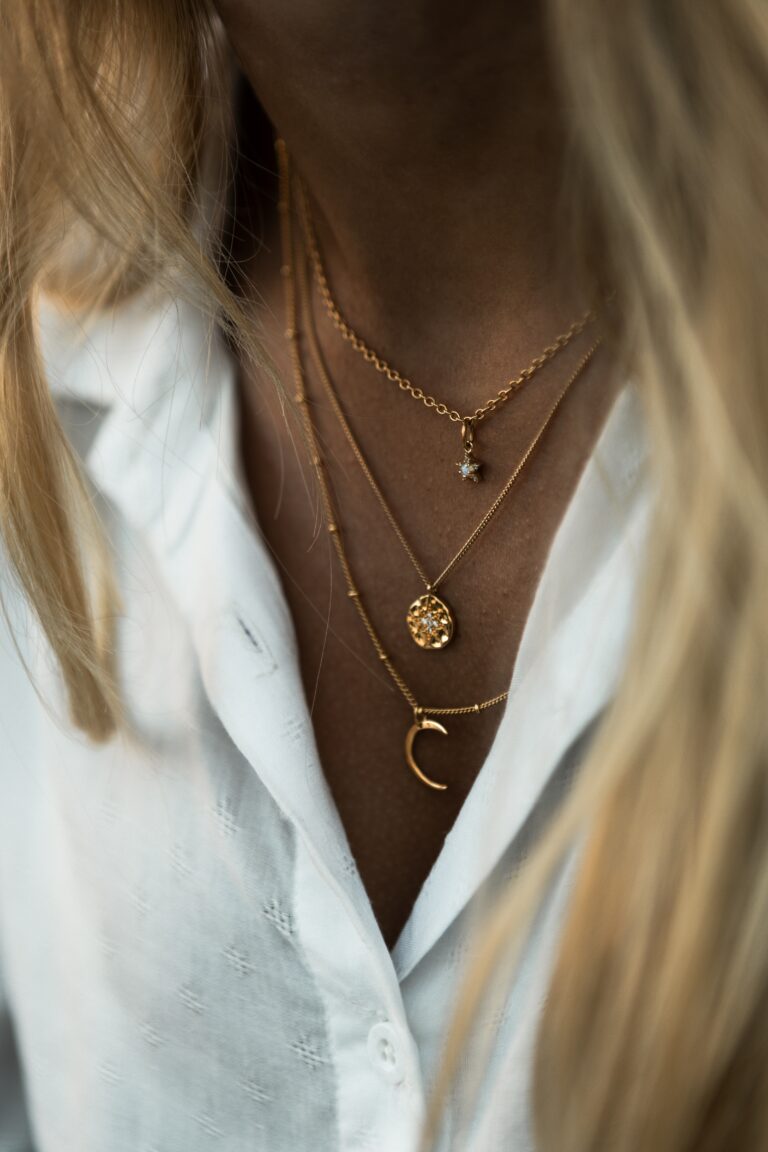Sterling silver is a really popular metal right now. Especially when making jewelry. here are some information you need to know if you are starting to get intrested by sterling silver.
What is sterling silver made of
sterling silver is an alloy of metals that is primarily made up of 92.5% silver and 5% copper, with traces of other metals such as zinc. The ratio of the amount of those three metals can vary for different types of sterling silver- some may contain more copper or more zinc than others. But no matter the amount, metal alloys like this are often called “silver” because they generally contain at least 92% silver by weight, and so they’re usually known as “sterling”. It’s a common misconception that any jewelry made from a precious metal alloy containing silver is automatically sterling silver- and in reality, there may be many types of jewelry that fit into that category depending on their ratio and the amount of silver they contain, sometimes more than others.Because the alloy is 92.5% silver he is also caled 925.
What are the four main steps in the production of sterling silver products?
The four main steps in the production of sterling silver products are mining, refining, smelting and casting.
Mining- During the mining process, silver ore is dug out of the ground. Once the ore has been mined, it’s taken to a refinery where it undergoes refining in order to be made into pure silver.
Refining- At this stage, impurities are removed from the silver until all that remains is pure metal (in other words, sterling silver). The purity of the silver produced at this stage will determine how much copper it finally contains. The next step is smelting- which involves heating crushed silver ore under intense heat and pressure so that any additional types of metals in the mixture fuse together with the pure silver, creating an alloy known as “sterling” because it usually contains at least 92% silver.
smelting- Finally, molten silver is poured into a mold in order to produce the item that will eventually be sold (such as jewelry).
Casting- After smelting, the silver is poured into a mold and allowed to cool before it’s ready to be used in jewelry making.
The history of how people have been using sterling as currency
Sterling silver has a long history. It’s originally thought to have come about in Europe around the 12th century AD- back then, it was primarily used for trade and to pay off debts. However, today it is mostly a symbolic currency- which means that most of the time, it’s not a form of payment. Countries still issue coins with a face value due to historic tradition and some countries still use coins as currency in everyday transactions. Even though it’s not often used on a regular basis anymore, there are many people who collect these coins because they’re seen as rare symbols of national sovereignty.
You are probably asking yourself why even doing such a thing as bringing down the value of silver by adding other metal to it. Well the reason is, silver is a very soft metal and with time passing he can lose shape and get scratched especially if you use it daily. When you mix it with other metal you make it a lot more strong and durable.
Who can wear sterling silver jewelry
Sterling silver can be worn by people of all ages. Many people are under the impression that only adults can wear jewelry made from this precious metal- but they’re wrong! There is no age limit on who can wear sterling silver jewelry. If you have any doubts, consult with your doctor or a medical professional for more information. .
sterling silver is hypoallergenic so it’s good for people with sensitive skin. It won’t cause any irritation even to people who have very sensitive skin, so it’s completely safe to wear.
If you’re searching for a wonderful metal that’s simple to work with, consider sterling silver. You may create beautiful jewelry designs for your family and friends using this metal.
Questions you should ask before buying a piece of sterling silver
If you’re looking to purchase a piece of jewelry made from this precious metal, it’s important that you find out more about it and make sure you buy something that will last. To make your life easier, we’ve compiled a list of questions- the answers to which will help you make an informed decision and avoid any future disappointments.
1. How is it made?
2. What kind of metal alloy does it contain?
3. How often do you have to clean and polish your jewelry after wearing it?
4. Does the piece contain any stones or gemstones? If so, where are they sourced from and what kind of care should be taken to ensure their quality and luster lasts for as long as possible?
5. Who is the company behind this product- where are they located, how long have they been in business, etc.? If they aren’t always upfront about these types of details, that’s a red flag! These are questions you need to ask before deciding whether or not you want to buy anything from them.
An assay mark is a symbol or number that represents the maker, as well as the year and place of origin. It’s essential to know these details in order to certify the authenticity and quality of your piece- which is why we’re going to delve into this topic today! Some common assay marks and what they mean:
1) “925” – This stands for 92.5% sterling silver.
2) “PT”, “E”, or “EP” – This stands for the mark of the manufacturer, which is usually the initials of their company name, but it could also be an acronym for their location.
3) “Oarsman” or “Fishscale”- These are marks that denote the maker, but they’re typically used by American manufacturers.
4) Assayer’s Marks- These are symbols that represent where and when your piece was made (like a date stamp).
5) Crown- The British crown is usually found on pieces made before 1947.
6.) Lion Passant- This symbol represents the sterling silver standard set in place by King Henry VII in 1478.
7.) Pointed Left Leg of the Queen- This mark indicates that your piece contains gold, which was outlawed in England in 1560 under Queen Elizabeth I (this is why you rarely see this symbol today).
8.) Pheon- This mark is used for pieces that are made in London.


